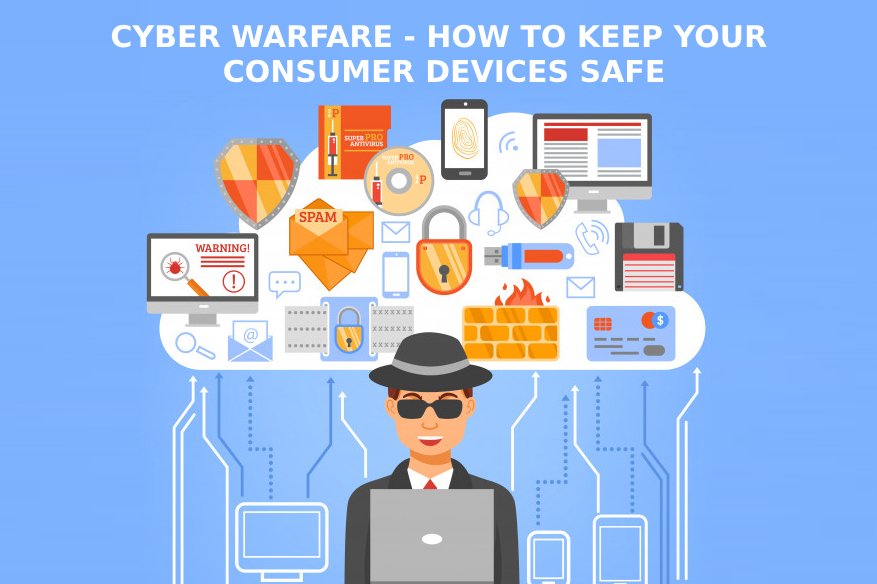Cyber Warfare – How to Keep Your Consumer Devices Safe

According to the 2019 Cyber Threat Outlook published by defense industry firm Booz Allen Hamilton, the year 2019 is likely to see an increase of state actors taking aim at the private sector in foreign companies, continuing an ongoing trend over the past several years.
The report published quotes about economically-motivated attacks, aimed at “stealing information, like intellectual property and corporate bidding strategies, to help an adversary’s domestic industry,” as well as DDoS attacks against public and private resources, and information warfare strategies that “attempt to inflame or generate public relations and legal controversies to harm targeted sectors and companies with investor, regulatory, consumer, or political backlash.”
Criminals mount these attacks by exploiting weaknesses in consumer devices, as well as by manipulating group behavior through maliciously applied sociology.
Here are three ways state actors are targeting businesses, and how to stay safe, according to the report.
1. IoT devices
State-sponsored attacks increasingly on IoT devices to build botnets, which then tunnel connections through Tor for pseudo-anonymity.
Internet of Things (IoT) are effectively network-attached purpose-built computers, and these computers require the same level of security attention as any desktop or laptop on your network.
According to the reports, “15 percent of IoT device owners don’t change their default passwords, and 10 percent of IoT devices use the same five passwords for administrative access.”
How to protect your IoT devices:
- Change the default passwords and all redundant open ports on existing IoT devices be closed.
- Establish a process to inventory, identify, scan, and secure new devices as they are integrated into the environment. Where possible, isolate IoT devices on a separate VLAN and allow the principle of least access to govern, monitor, use, and connect to the device.
- Include IoT devices and networking devices in your organization’s vulnerability management program. Conduct regular external and internal scans for vulnerable devices. Establish and adhere to service-level agreements for patching with real consequences for non-remediation.
2. Deepfakes
Deepfakes is an AI-generated or edited video, that use machine learning to create plausible forgeries used to depict events that never occurred.
The report stated “The incorporation of malicious deepfakes could be a tactic to spread false information, discredit or damage the reputation of targeted organizations, or even create political turmoil. Weaponized leaks-in which data is stolen and released publicly, sometimes with falsified data blended in-have increasingly been leveraged in influence operations.” Additionally, deepfakes can be further weaponized by being inserted in stolen legitimate data.
How to keep a check on deepfakes:
- Monitor your reputation and alert your PR teams about negative news about your organization, true or not. Conduct regular proactive outreach on social media to establish your public relations team as a trusted source of news to combat these misinformation campaigns.
- Engage your leadership and communications teams in table top exercises to plan and practice handling the types of reputation attacks which are most likely to target your organization.
3. Wireless
Today Wireless communication protocols are built with security in mind, though vulnerabilities do exist. Since legacy systems are vulnerable, security researchers have found that control packets can be captured, modified, and replayed. Likewise.
Security in wireless connectivity can be inherently insecure, and here is the way to protect your wireless communications:
- Disable unused wireless protocols like; Bluetooth on laptops and desktops.
Expand the scope of penetration test assessments to include known propriety wireless protocols exposed to the public.